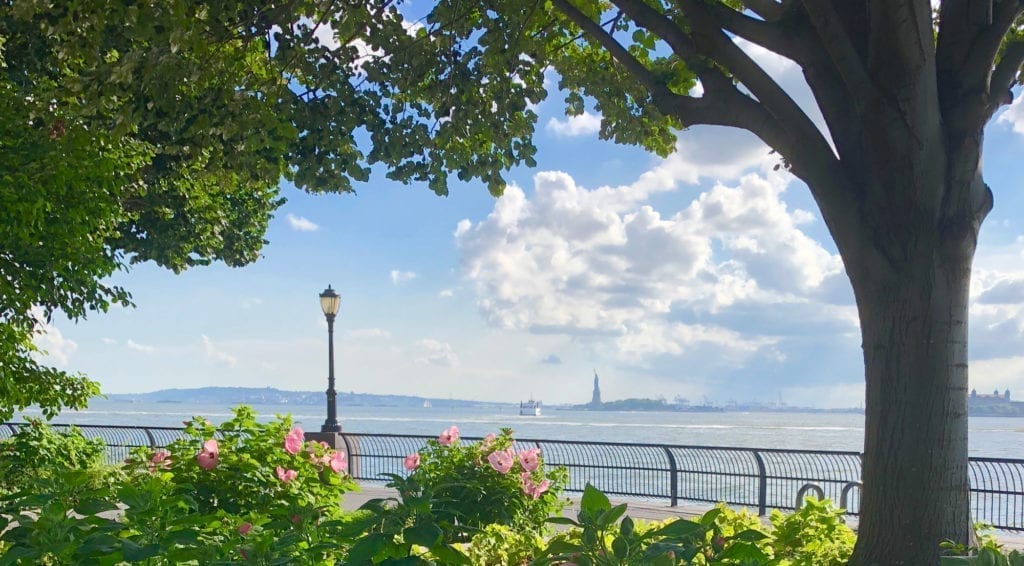Four marble statues grace the The Smithsonian National American Indian Museum stairs. This Smithsonian museum in lower NYC stays open 365 days a year with free admission. The statues show world continents as women. In fact, it’s entitled The Four Continents. American artist, Daniel Chester French built them between 1903-1907.
Click below for the podcast version of this piece.
Asia Graces the National American Indian Museum
On the far left lies the serene Asia statue. She sleeps with regal poise. Her quiet points to the time when Asia’s power lay dormant. Their history once held glory, though. Before the Industrial Revolution and Age of Exploration, Asia was a powerhouse. But this prowess in tech and warfare fell into shadow by the 1900s. That’s because most of Asia had not yet industrialized. Thus, their continental power weakened as Europe’s grew.

Beside the docile lady statue a tiger crouches. This native animal to Asia remains a power icon there. So, it helps even the modern viewer see her cultural identity. A Buddha statue nestled in her lap shows Buddhism’s influence throughout Asia. Also, an old man skulks behind her. It’s foreboding. This ties in with skulls beneath her feet. These are the artist’s signs of a sick continent. He points to Asia’s opium epidemic with these symbols.
United States – It Girl of the National American Indian Museum
Next to Asia sits the exuberant youth of America. She holds a torch like Lady Liberty – a nearby powerful feminine landmark. That’s because she also represents freedom in the United States. Art often depicts a young woman to represent liberty. Also, America was the New World in the early 1900s. Thus, she’s young. Her face and posture reveal this vital strength.

A Native American man behind her secures eyes on her continent. This is key, given that this is the American Indian Museum. Also, a fasces lies in her lap. That’s a bunch of sticks bound by twine. The artist uses this for the concept of unity. This idea of stronger together, is core to the United States. After all, we are many states working as one country.
Corn also crosses the statue center. This crop was the first major U.S. export. In fact, it remains primo as our food export still today. Aztec symbols sit beside our lady’s throne too. These refer to the early people in our Americas. It’s a culture that helped build the United States a strong base. This is another crucial reference for the resonant theme of this Smithsonian American Indian Museum.
Old School Values – Europe
Europe sits on the other side of the museum stairs. She’s America’s opposite. At the time of its creation, Europe represented the old world. So, she’s an older woman. Her crown shows Europe as a world power. In the early 1900s this continent was the ultimate superpower. She rides a ship to signify the European Age of Exploration and their widespread sea trade. This power lay in naval supremacy. That’s because Europe took many lands by sea. In fact, The United States serves as example. This is the American Indian Museum after all.

Engraving cover Europe’s throne. This refers to reliefs from Ancient Greek temples. Also the globe and book under her arm point to exploration and education. Behind her an old man peers at a wreathed ball. This shows the importance of history. It’s a key theme at the National Museum of the American Indian. History’s also Europe’s favorite past-time. They love their days of yore. The globe’s wreath refers to Ancient Greece or Rome. That’s because Europeans often studied them for inspiration. They love tradition – the older the better.
Fighting for Africa at the National American Indian Museum
Finally, Africa sleeps as well. But this statue has a lion under her arm. That’s because Africa sleeps for a reason unlike Asia’s. It’s all about untapped potential there. Africa rests like a cat waiting to pounce. This shows the historic Scramble for Africa. Scramble was so named because the European powers tussled over African territory. They knew it held vast wealth.

In fact, Europeans took Africa in a rush for its resources. Lions are native to Africa. So, it’s here as a clear sign for the viewer. The artist also put a sphinx by her side and a scarab to honor the Ancient Egyptians. Her clothes fall off bare breasts. This exposure points to the nosing around of Europeans and their exploits. It thus serves as a proper entry to the National Museum of the American Indian.
And This is Only the OUTSIDE
Visit the The National American Indian Museum. Their vital main exhibits show Native American art through the ages. It unites art and history. It highlights an innovative way of life in early America. Not only that, the Smithsonian has modern Native American art too. Many special exhibits show the profound talent of these new artists. Their works portray the unique plight and shared experience of Native Americans today.

